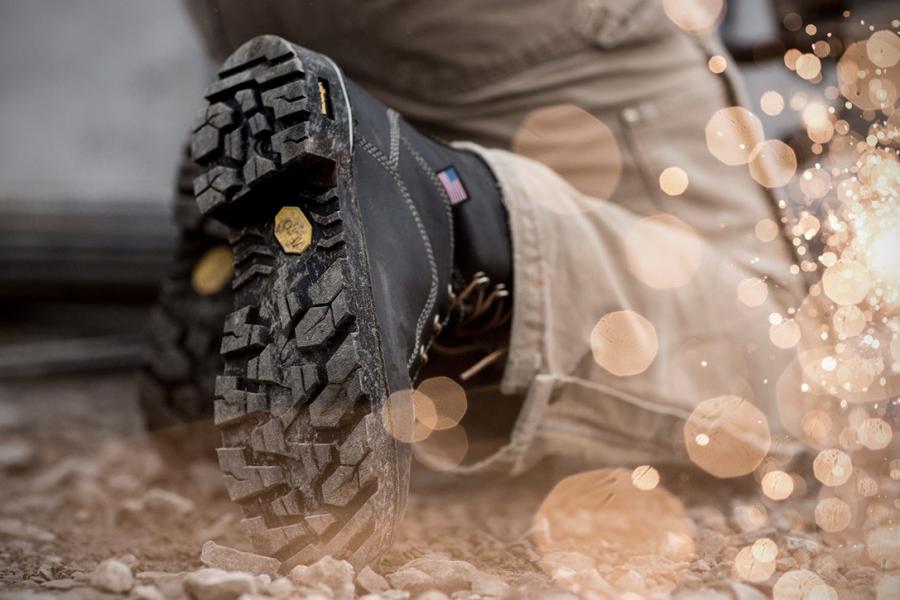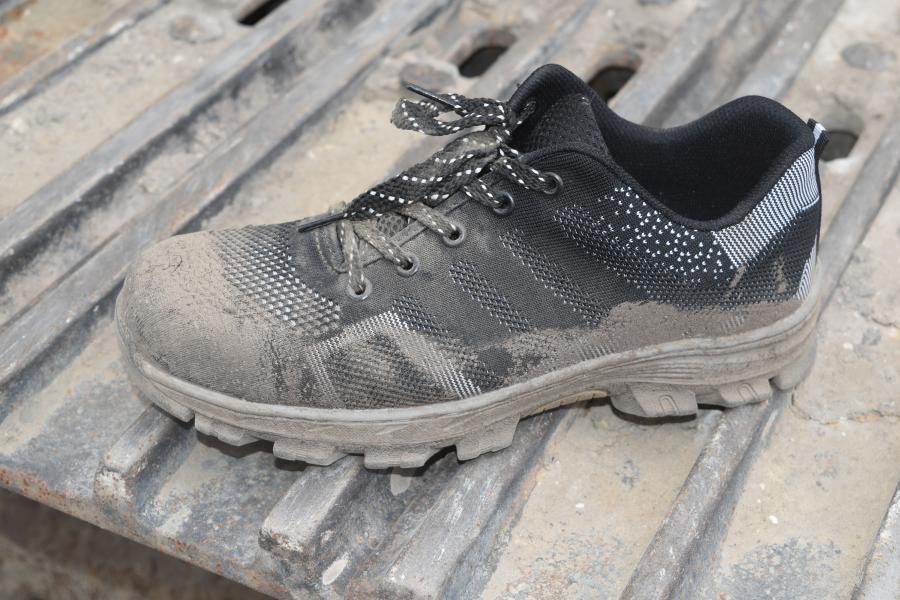Although there are many parts that go into making the perfect work boot for each profession that requires one, ultimately choosing what fits your needs best is not complicated at all.
Choosing the right boot for your job can be tricky, especially with so many makes and models out there. However, having the right footwear so that you feel comfortable and protected while at work can certainly make your workday easier.
Although there are many parts that go into making the perfect work boot for each profession that requires one, ultimately choosing what fits your needs best is not complicated at all. This short guide will teach you how to do just that.
Toe Protection
Construction sites are wrought with hazards, which is why wearing protective gear is highly important. Work boots fitted with the appropriate toe protection material are important. The toe protection fittings should be ASTM (American Society for Testing and Materials)-rated. There are three types of protective toe caps:
1. Steel Toes
These are heavy, compact and make the most traditional form of protective toe caps. Steel material conducts temperature, so your feet will likely get cold during winter. Additionally, if you work on a construction site that has metal detectors or magnets, steel caps may not be an ideal choice.
Over time, footwear manufacturers have improved steel toe caps and are now producing asymmetrical safety toes. This kind is contoured to the shape of your feet and toes, thus reducing weight without compromising on protection.
2. Aluminum Toes
These are ideal for construction workers looking for a lightweight toe cap. Aluminum toe caps are thicker than those made of steel, but they don't conduct cold temperature.
3. Composite Toes
These are made of plastic, carbon fiber and Kevlar. Composite toe caps are light but thicker than steel. They don't absorb heat or cold and are excellent alternatives for employees working in areas that should stay metal-free.
Soles
Modern boots have soles designed for specific industries. Employees working in the construction industry, for example, should choose work boots fitted with ladder treads to provide added protection against slipping when climbing.
Loggers, on the other hand, should use work boots that have a deeper tread to provide additional stability on any terrain. For them, a pair of high heel logger boots with extra traction and support could be just what they need in order to protect their feet against harsh terrains and avoid injuries.
Here are different types of soles you are likely to find on the market:
1. Thermo Polyurethane Outsoles
These outsoles are abrasion- and chemical-resistant. TPU outsoles are designed for rough terrains and are lightweight than other outsoles.
2. Rubber Outsoles
Rubber is the most common outsole component for manufacturing and construction work boots. It is oil, abrasion, and slip-resistant, which are essential features for such work areas. Vibram makes a high-performance rubber as it provides adequate traction for dry and wet surfaces as well as rugged terrains.
Add a Metatarsal Guard
The metatarsal guard protects the upper part of your foot and toe from nails, welding embers, or other heavy objects. Also known as a met guard, this nifty little piece can make all the difference, no matter what your profession is. As an added tip, if you work around fire a lot, be sure to choose work boots fitted with Kevlar fibers as they are fire-resistant.
Choose Comfortable Insoles
Most boots come fitted with generic insoles that provide relief for a few days. These cushioned inserts lack structure, hence offer minimal support for your feet to make it through the day. Look for insoles that provide adequate arch support for your feet. However, manufacturers have caught on to this issue and have started improving on it. For example, Timberland now makes special Anti-Fatigue insoles that are a perfect solution for this problem.
If you have high arches, choose a boot that can offer quality arch support -- it'll help distribute your weight across your foot. Flat-footed people, on the other hand, should use footwear with a deep heel cup to stabilize the back of the foot while distributing weight across the base uniformly.
What is more, the right kind of socks will help increase the comfort of safety toe boots. Look for socks that are thicker in the heels and toes. Socks with ribbing along the instep are also great for a boost of comfort. Added thickness will help reduce toe holes from ripping into the socks, while also providing a cushion against the safety toe, while the ribbing under the instep will provide better support.
Boot Construction
Today's footwear brands feature improved construction designed to increase comfort and durability.
Here are the most common and important types of boot construction you need to know about:
- Cement Construction. These kinds of boots have their soles cemented to the upper part of the boot. While the work boots are light, the soles are irreplaceable once they wear out. This part of the construction is used to create a more flexible fit. Thus, the shoe remains flexible in cold temperature, which reduces break-in time.
- Welted and Stitch Down Construction. These work boots have the inner and upper sole stitched using a leather strip. This boot construction allows the boots to be repaired or re-sold, thus extending the life of footwear.
- Height. While tall boots offer adequate protection, they are heavier and hinder flexibility. Short boots are light and ideal for all-around use. More height means more ankle support, but also less freedom to move. Depending on the work environment, each supervisor or company can set height requirements for work boots.
- Water Resistance. Work boots fitted with treated leather are ideal if you are working in wet construction sites. Some boots feature breathable materials that let out moisture, though they feel hotter than regular fabric or leather boots. Depending on whether the boot has waterproof construction or is just lined with waterproof materials, it will be either breathable or it will retain more heat.
- Insulation. No matter the make and model, work boots are generally insulated. In fact, insulation in work boots is a given because it adds an extra layer of protection and comfort.
How to Choose Your Best Fit
We've listed several pairs of high-quality work boots for a variety of trades.
1. Caterpillar Men's Second Shift ST Work Boot: These boots from Caterpillar are made out of high-quality, tough leather uppers and traction outsoles, making them ideal for a variety of working environments. Construction workers and people who work with heavy items like delivery drivers will like these boots.
They're oil-resistant and also have a steel cap, so they'll protect you from slipping, or crushing your toes. If you work in varying, rough terrains, a steel shank insole will keep you from losing your balance. The solid shape of the sole and the prominent heel add stability to the arch and give rigidity when you walk. A PU sock liner provides a bit of comfort. Break these boots in for at least a couple of days after purchase.
2. BNG Rubber Work Boots: BNG's Rubber Work Boots are ideal for people who work in agriculture, landscaping, ranching and fishing. Inferior rubber boots are prone to cracking, but BNG's innovative boot is made out of one, singular and seamless structure, so the shoes are crack-resistant. Large, dispersed cleats offer superior slip resistance and the material is acid-, water- and puncture-resistant. Despite their high quality, these boots are very affordable at less than $25 per pair. Buy several pairs in bulk and pay less per unit for additional savings.
3. Caterpillar Men's Diagnostic Waterproof Steel-Toe Work Boots: Caterpillar's Waterproof Steel-Toe Work Boots are great for people who work in muddy and snowy environments. Waterproof boots are ideal for workers in the forestry and agricultural industries. But keep in mind that while these boots are waterproof, they are not slip-resistant. Inside, the shoes use comfortable, gel technology to keep your feet supported and dry. Gel insoles are also removable for easy cleaning. Rigid, outer soles keep your feet supported on rough, slippery terrain. These boots are easier to break in than most work boots thanks to their contoured design.
4. Irish Setter Men's 6-in. 83605 Work Boot: The generous, rubber soles on these work boots are perfect for electricians. In fact, these work boots meet strict ASTM electrical hazard safety standards. People who work outdoors can also benefit from these boots, with their stabilizing tread. The uppers on the shoes are 100 percent waterproof, and the soles are wedge-shaped for added support and stability. Inside, a woven, nylon lining protects your foot from blisters. Even though this boot's uppers are durable and sturdy, the material is surprisingly pliable, so they are easy to break in.
5. Timberland Pro Men's Internal Met Guard Work Boot: These work boots offer superior protection against sparks and melted pieces of metal. The tops are snug and secure to keep anything hot from touching the foot, and they are easy to get off for quick removal. Self-extinguishing stitching will give feet even more protection from sparks. Steel toes, a steel shank and a metatarsal guard support the foot and prevent slipping, Plumbers, concrete workers, and delivery drivers can also benefit from the oil and slip resistant soles. These boots take at least a few days to break in.
6. Outdoor Pocket Tactical Indestructible Shoes: Tactical Indestructible Shoes from Outdoor Pocket are light, comfy and made with anti-smash and anti-slip materials. A pierce-proof base ensures that nothing sharp will puncture the shoe and injure feet. A hard plate built into the front of the shoe also protects toes from falling plates or other heavy materials. These waterproof shoes will keep feet safe and dry all day. These shoes are great for changing up your work boots in warmer conditions.
7. Timberland Pro Men's Wedge Sole 6-in. Boots: If you work in roofing mechanics, you need a work boot that will protect your feet from getting stabbed by fasteners and other roofing materials. The outside of a roofer's work boots must be made out of highly durable materials that can resist rough, abrasive shingles, too. Anti-slip soles are another non-negotiable feature for a roofer's work boots, and Timberland Pro Men's Wedge Sole 6-in. Boots fit the bill here.
The thick rubber soles are slip-resistant, keeping you safe from falling, and the outside of the boots are tough enough to resists scratches from asphalt shingles. Inside, your feet will enjoy superior arch support from a stiff, EVA midsole.
When you work in the trades, your shoes need to deliver comfort and function, and they should also provide additional protection from the elements and other work-related hazards. Investing in quality work boots that are ideal for your working conditions will protect your feet and make the workday go a little bit faster when your feet are comfortable, dry, and supported.
Today's top stories














